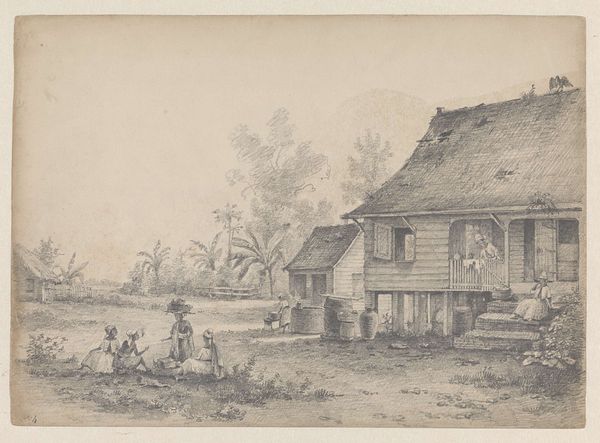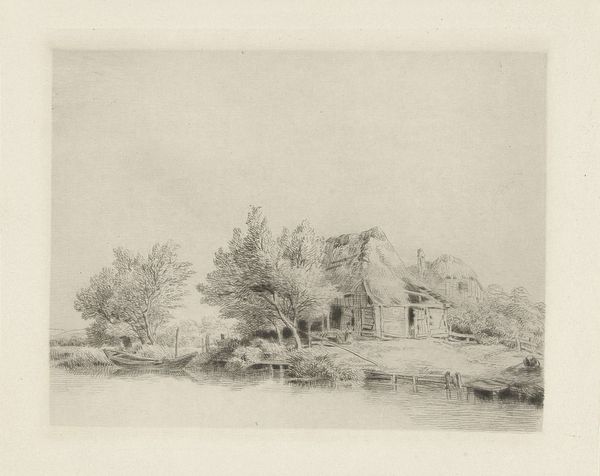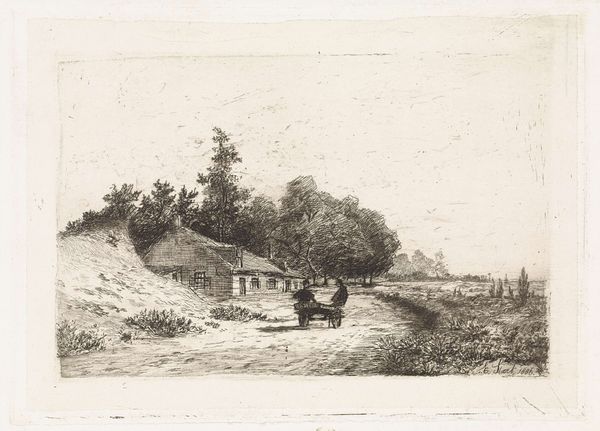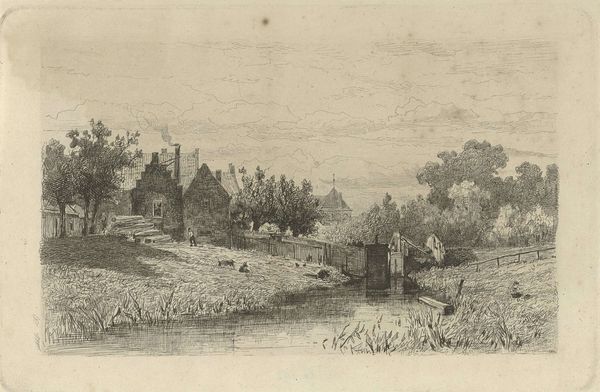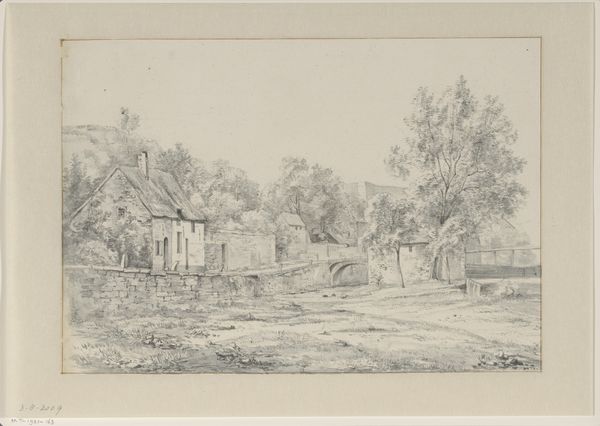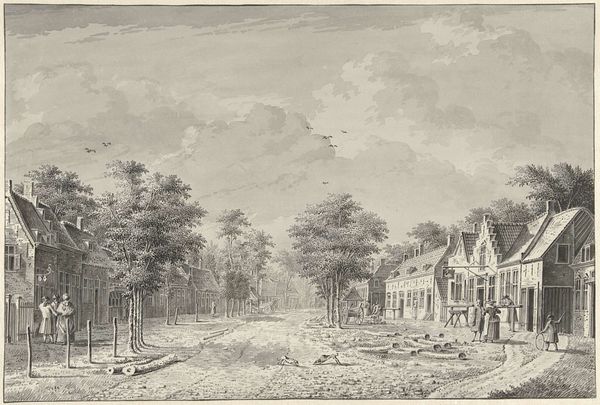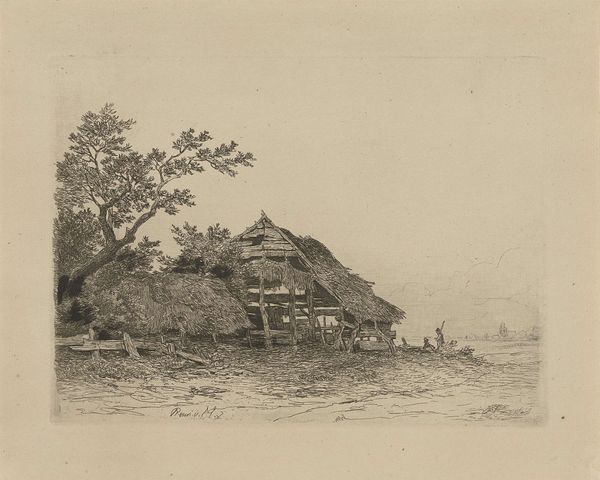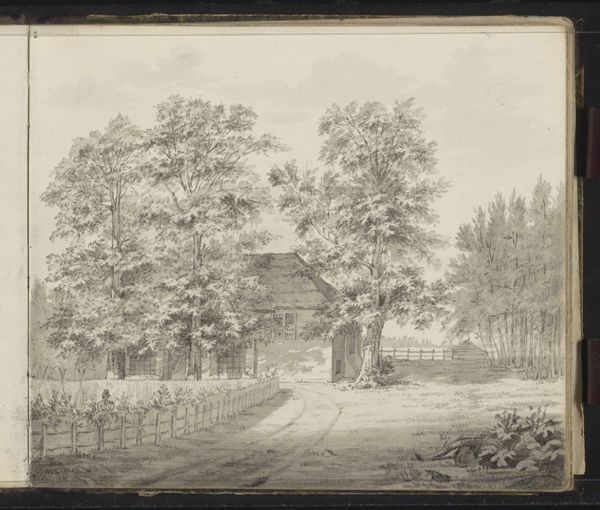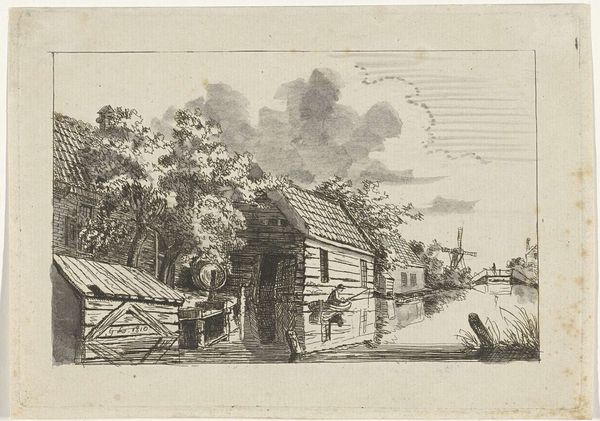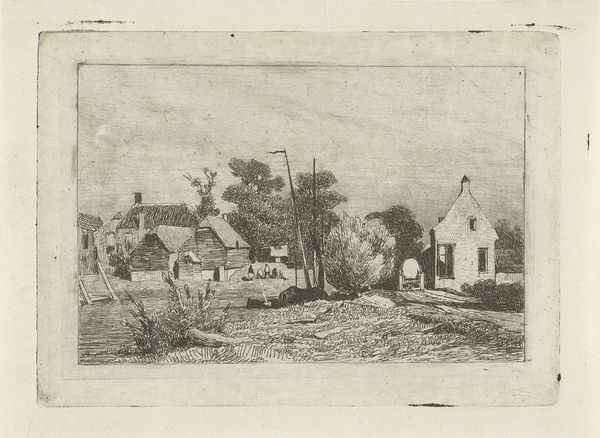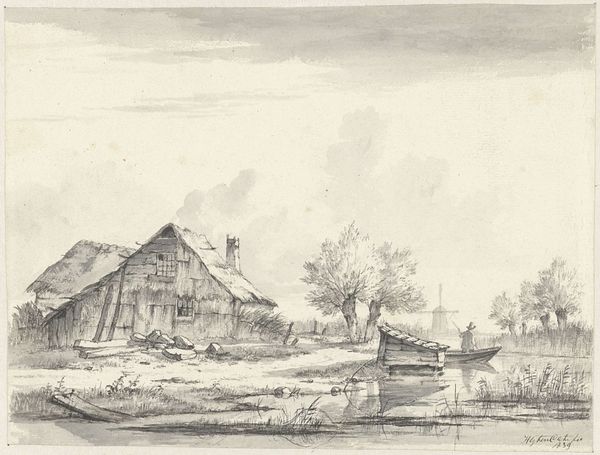
Fotoreproductie van het schilderij 'Een watermolen' door Meindert Hobbema 1893 - 1912
0:00
0:00
photography, gelatin-silver-print
#
landscape
#
photography
#
coloured pencil
#
gelatin-silver-print
#
realism
Dimensions: height 99 mm, width 141 mm
Copyright: Rijks Museum: Open Domain
Curator: This gelatin-silver print, dating from around 1893 to 1912, is a reproduction of Meindert Hobbema’s painting "A Water Mill." Editor: It’s sepia tones give it a tranquil, nostalgic feeling. The composition seems very deliberate, the watermill nestled perfectly amidst the foliage. Curator: Exactly. What I find interesting is how photography here documents painting. This copy reduces the aura of Hobbema's original to a commodity available for mass consumption. Editor: The watermill is an important symbol of industry and rural life blending in 17th-century Dutch landscapes. Water represents fluidity and change, the endless cycle of life, powering these human activities. The wheel also embodies the circular, repetitive nature of labor. Curator: True, the labor necessary for both maintaining and operating the watermill. It's easy to romanticize a scene like this but we must consider how heavily dependent this whole scene would have been on manual labor. Also think about the labor in reproducing Hobbema’s work – photography was becoming more accessible, but the production and distribution were still efforts in material terms. Editor: Looking closely, the trees frame the central subject. This placement and the angle seem very intentionally placed, adding layers to the natural composition and symbolizing rootedness and connection to place. This image brings a strong sense of national identity through familiar visual tropes of Dutch countryside. Curator: Absolutely, but isn't that idea of a timeless rural ideal somewhat constructed? We should really question the intent and social context that prompts a need for reproductions. Who owned them? What did they signify to the owner regarding notions of "Dutch identity" in a period of growing industrialization? Editor: Perhaps, then, the very existence of this photographic reproduction and others of the time underscores that complex yearning. The original symbols morph when reinterpreted through different medium and production method. Curator: Right. Thinking about photography reproducing painting here has given me a lot to think about. The layering is a nice entry point to questions about art history. Editor: Agreed, a fresh look at a timeless theme! I enjoyed unraveling what the symbols of watermills and countrysides may reveal today.
Comments
No comments
Be the first to comment and join the conversation on the ultimate creative platform.

